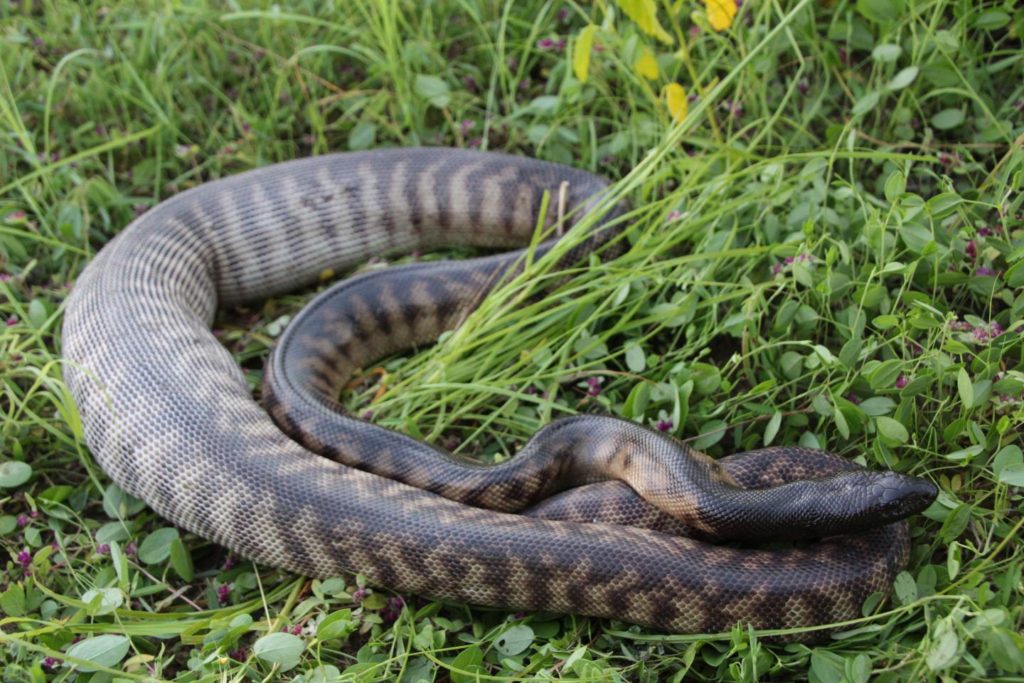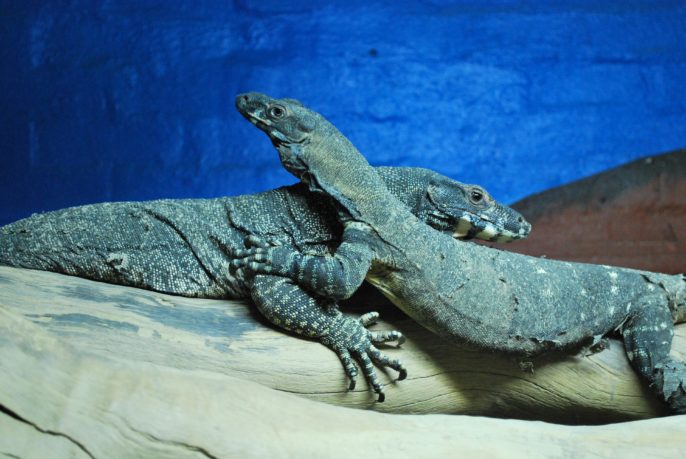Fortune Favors Bold Lizards
It has been said that the brave don’t live as long, but the timid don’t live at all, so this one is for the brave. Bold lizards, regardless of size or sex, have the most success finding mates.
By Kate Stone
Ecologists have found a valuable life lesson to be learned from lizards: a bold personality—not body size or sex—correlates with the mating success of yellow-spotted monitor lizards roaming the remote Oombulgurri floodplains of tropical Western Australia. But boldness has a cost: bold individuals expose themselves to a much higher risk of being eaten by predators. Researchers demonstrated quantifiable behavioral syndromes in the large lizards, with an intriguing relationship to their seasonal hunting strategies.
Do lizards have personalities?
“Personality is kind of interchangeable with the term behavioral syndrome,” says Georgia Ward-Fear, a researcher at the University of Sydney. “Some scientists have a weird thing about saying ‘personality’; they don’t like to think animals have personalities. But they definitely do.” Boldness, she and her co-authors found, was not conveyed by imposing stature. Bold lizards could be either male or female. “There are bold females as well as bold males, and shy females as well as shy males. Some of the biggest individuals we observed were really shy.”
The yellow-spotted monitors (Varanus panoptes), known locally as goannas, are related to Komodo dragons and share many of their larger cousins’ behaviors. Adults can be 1.6 meters long, and some males grow larger than that. The lizards hunt insects, frogs, and small mammals, and they scavenge whatever they can get.
“This boldness syndrome was not only quantifiable, but it also correlated with a heap of ecological traits that we were monitoring. We were only able to figure that out because we were radio tracking individuals to assess their home ranges and the characteristics of the habitats that they were choosing to stay in during the two distinct seasons,” Ward-Fear explains. “It was based on intuition really, to start with, but we couldn’t have imagined how many correlations we would pull out based on the behavioral differences within individuals.”
“Anyone who works with these animals knows that they are amazing. They are renowned for their intelligence, but there has been no formal study of their cognition. They do come across as intelligent lizards. They are quite sneaky, and inquisitive. They are a bit more like a mammal in that sense. They’re fun to work with,” Ward-Fear continues.
RELATED: FLORIDA LIZARDS ARE EVOLVING, FAST
Bold lizards get ahead
Bold lizards have substantially more mating success than more timid lizards. Running the lizards through a series of behavioral tests, the researchers found that mating success didn’t depend on size or even sex. Successful lizards took up more space, faced physical challenges head-on, and explored their surroundings.
“They’ll try to take you on if they feel too threatened, or if they’re angry, or during the mating season. They stand up on their hind legs, and they inflate their throats,” Ward-Fear says, but the goannas are also curious. “[Bold lizards] watch you from a long distance away, and they can let you get quite close to them.”


When annual monsoons flood the Oombulgurri, the plains burst to life along the rivers. The verdant river edges are prized goanna hunting areas, rich in food, but the thick plant life also hides dangerous predators. During the wet season, large pythons descend from the steep, rocky escarpment at the edge of the plain to patrol the river edges. The pythons, like dingos, raptors, and humans, are big enough to make a meal of yellow-spotted monitors. The food-rich wet season is also the season of highest risk for goannas.
The ecologists discovered that shy goannas abandon the high-risk riparian zone during the wet season. Bold individuals, on the other hand, stay close, managing risk by avoiding dense vegetation where snakes lurk. As a consequence, many bold goannas are eaten during the wet season. Shyer lizards stick to sparser plant cover at all times of the year. During the dry season, when the need for water draws shy goannas back to the rivers, they experience their highest rate of predation. Goannas of different personality types appear to pursue complementary life strategies.
So, what can we learn from bold lizards? Perhaps that fortune, indeed, favors the bold.
This study was published in the Ecological Society of America’s open-access journal Ecosphere.
Reference
Ward-Fear, G., Brown, G. P., Pearson, D. J., West, A., Rollins, L. A., & Shine, R. (2018). The ecological and life history correlates of boldness in free-ranging lizards. Ecosphere, 9(3), e02125. https://doi.org/10.1002/ecs2.2125
Featured image by Akshay Chauhan.




